Kyoto: A Journey Through Time and Tradition
Join us for a free walking tour that unveils Kyoto's rich history, stunning temples, and serene gardens, blending the ancient with the modern in Japan’s cultural heart.
Time
3 Hours
Stops
9 Places
Distance
5.4 km
Kyoto Tower
Begin your tour at Kyoto Tower, the tallest structure in Kyoto, offering panoramic views of the city and a perfect introduction to its blend of modernity and tradition.
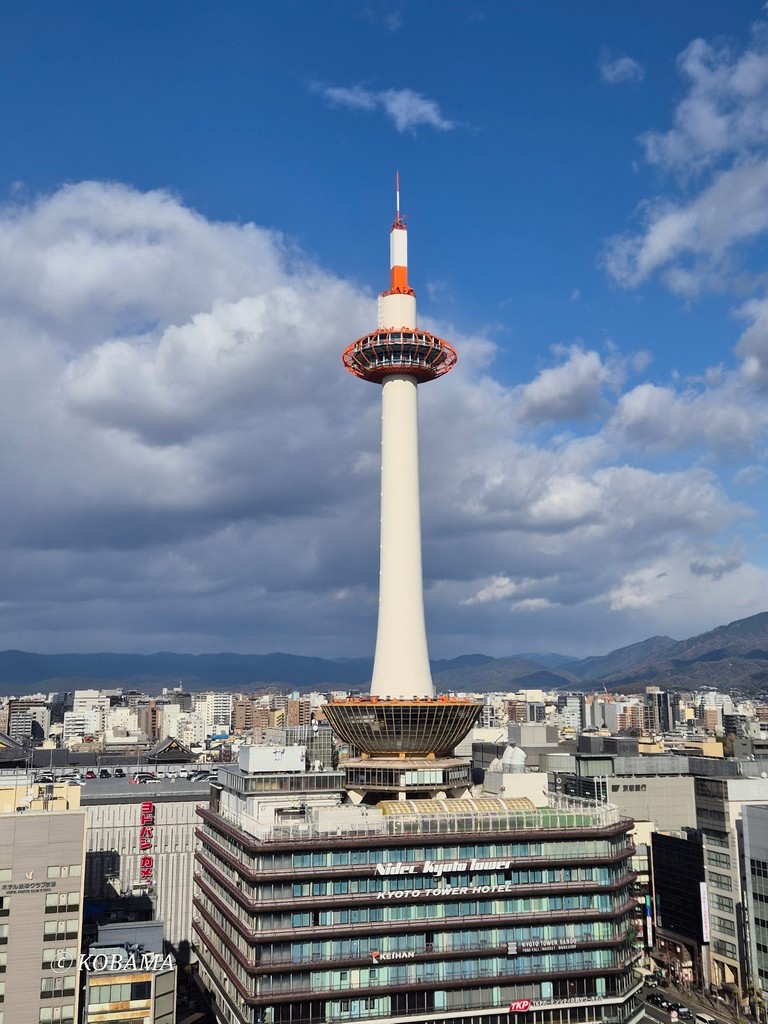
Kyoto Tower (Source: Google Maps)
Kyoto Tower, soaring at 131 meters, is the tallest structure in Kyoto, symbolizing the city's blend of tradition and modernity. Opened in 1964, it offers breathtaking panoramic views from its observation deck, allowing visitors to see the city’s historical landmarks and surrounding mountains. The tower's design is inspired by a lighthouse, featuring a cylindrical base and a unique, futuristic top. At night, the tower is beautifully illuminated, enhancing the skyline. It serves not only as a tourist attraction but also as a vital communication tower, reflecting Kyoto's evolution while honoring its rich heritage.
Higashi Hongan-ji Temple
Just a short walk from Kyoto Tower, Higashi Hongan-ji is one of the largest Buddhist temples in Kyoto, known for its impressive architecture and serene atmosphere.

Higashi Hongan-ji Temple (Source: Google Maps)
Higashi Hongan-ji, established in 1602, is one of the largest and most significant temples in Kyoto, part of the Pure Land sect of Buddhism. Its impressive architecture features the stunning Amida Hall, which showcases intricate wooden carvings and a massive, ornate roof supported by towering pillars. The temple is renowned for its serene atmosphere, attracting visitors seeking peace and reflection. It houses important cultural treasures, including beautiful artworks and scriptures. Higashi Hongan-ji also plays a vital role in Japanese Buddhism, serving as a center for religious practice and community activities.
Shosei-en Garden
Adjacent to Higashi Hongan-ji, Shosei-en Garden is a hidden oasis in the city, providing a tranquil escape with its beautiful ponds and meticulously maintained landscapes.
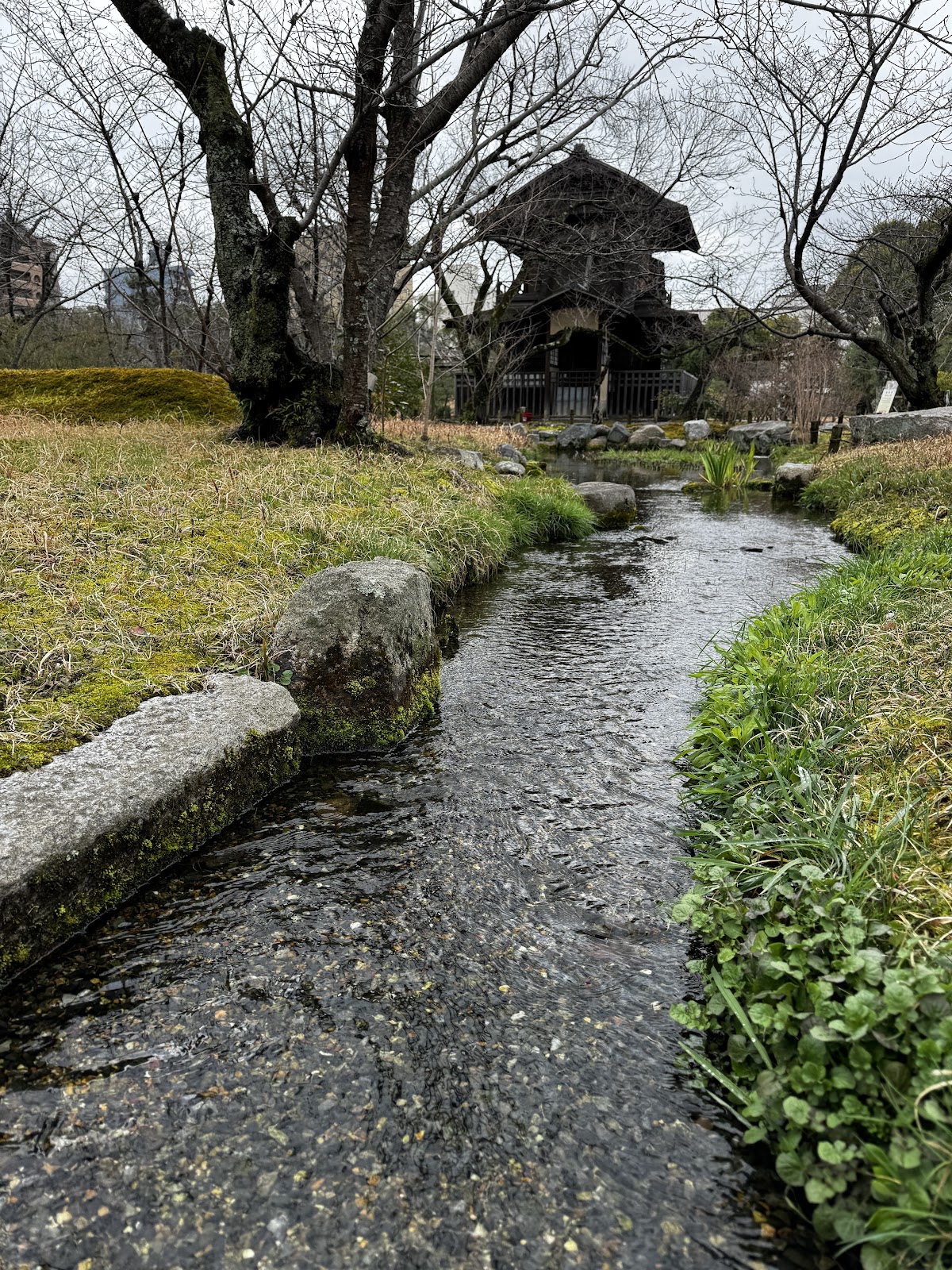
Shosei-en Garden (Source: Google Maps)
Shosei-en Garden, adjacent to Higashi Hongan-ji, is a tranquil oasis in the heart of Kyoto, designed during the Edo period. This exquisite garden features beautifully landscaped ponds, lush greenery, and traditional tea houses, creating a serene environment for visitors. The garden is meticulously maintained, showcasing seasonal flowers and plants, making it a perfect spot for relaxation and contemplation. With its historical significance, Shosei-en has been a retreat for Buddhist monks and scholars, embodying the harmony between nature and cultural heritage. Its peaceful ambiance invites guests to experience the beauty of Japanese garden design.
Sanjusangendo Temple
A brief walk southeast leads to Sanjusangendo, famous for its 1001 statues of Kannon, the goddess of mercy, housed in Japan's longest wooden structure.

Sanjusangendo Temple (Source: Google Maps)
Sanjusangendo Temple, built in 1164, is famous for its remarkable 1001 statues of Kannon, the goddess of mercy, housed in Japan's longest wooden structure. The temple's name translates to '33 intervals,' referring to the 33 spaces between its columns. Visitors are struck by the beauty and detail of the Kannon statues, each uniquely crafted and adorned. The temple serves as a site for important Buddhist ceremonies and is a testament to the artistry of Japanese craftsmanship. Surrounded by a tranquil garden, Sanjusangendo offers a reflective atmosphere, inviting guests to appreciate its spiritual and artistic significance.
Kiyomizu-dera Temple
Continue east to Kiyomizu-dera, one of Kyoto's most celebrated temples, offering stunning views from its wooden terrace and a rich history dating back to 778 AD.
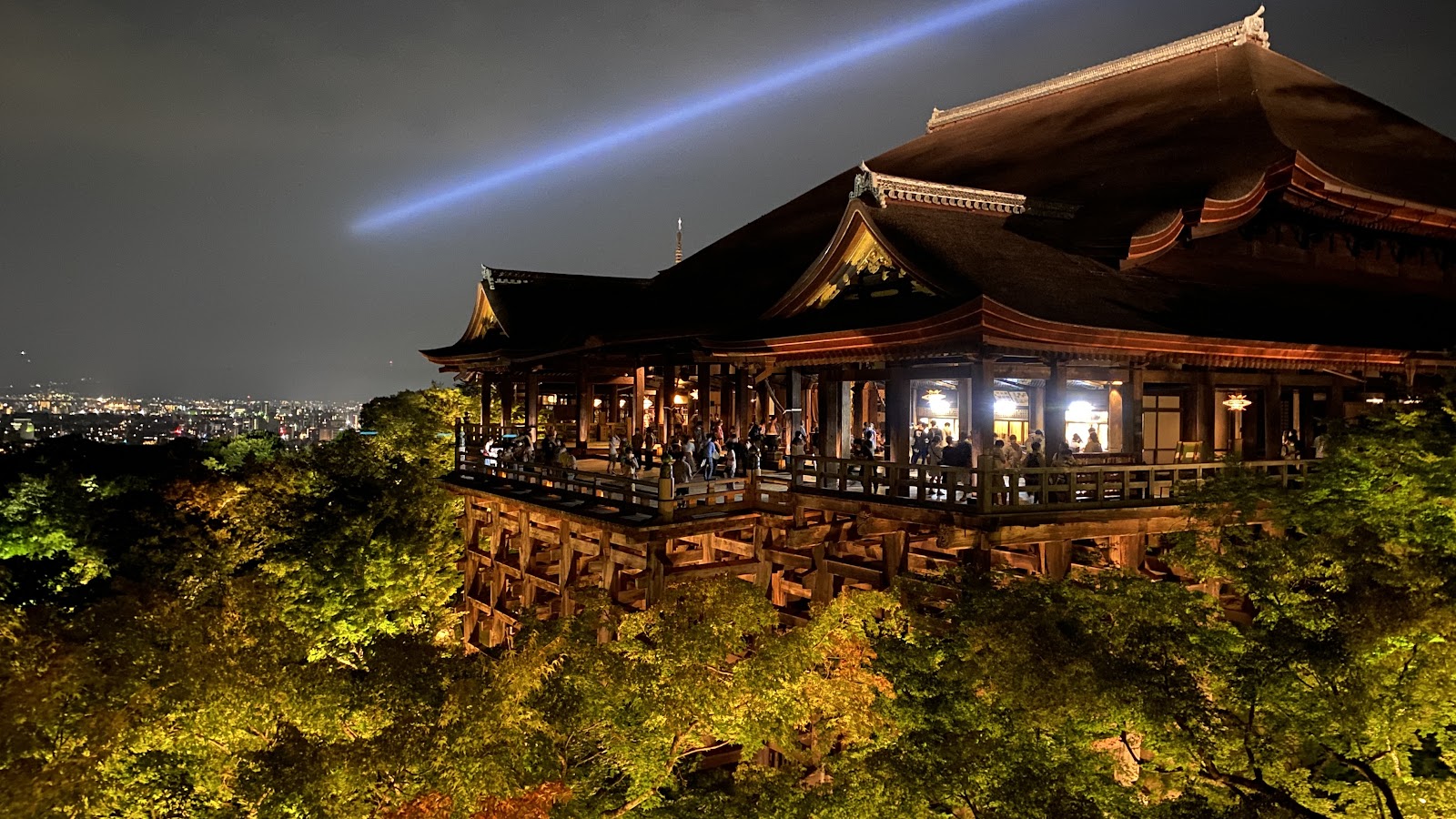
Kiyomizu-dera Temple (Source: Google Maps)
Kiyomizu-dera Temple, founded in 778 AD, is one of Kyoto's most celebrated landmarks, renowned for its wooden stage that juts out over the hillside, offering stunning views of cherry blossoms in spring and vibrant foliage in autumn. The temple's name means 'clear water,' derived from the Otowa Waterfall that runs beneath it. Kiyomizu-dera is a UNESCO World Heritage Site, reflecting the architectural brilliance of the period. Its main hall, built without the use of nails, showcases traditional Japanese construction techniques. The temple is also a significant spiritual site, attracting pilgrims and tourists alike.
Sannenzaka and Ninenzaka Streets
Just below Kiyomizu-dera, these charming, historic streets are lined with traditional shops and teahouses, capturing the essence of old Kyoto.
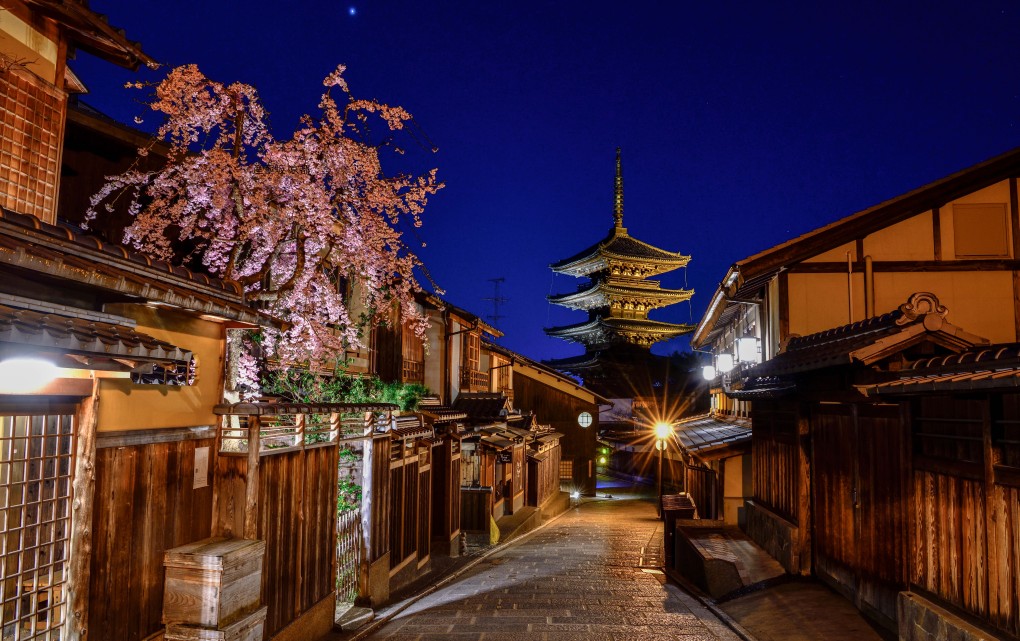
Sannenzaka and Ninenzaka Streets (Source: Google Maps)
Sannenzaka and Ninenzaka are charming, historic streets located just below Kiyomizu-dera Temple, lined with quaint shops, tea houses, and traditional wooden buildings. These streets capture the essence of old Kyoto, offering a glimpse into the city’s rich cultural heritage. The names of the streets translate to 'three years' slope' and 'two years' slope,' referencing local legends. As you stroll through, you’ll find artisans selling handmade crafts, local sweets, and souvenirs. The atmosphere is enhanced by the presence of geisha and maiko, who often pass through, making it a perfect spot for photography and cultural immersion.
Yasaka Shrine
Head north to Yasaka Shrine, a vibrant and important Shinto shrine known for its festivals and iconic red torii gate.
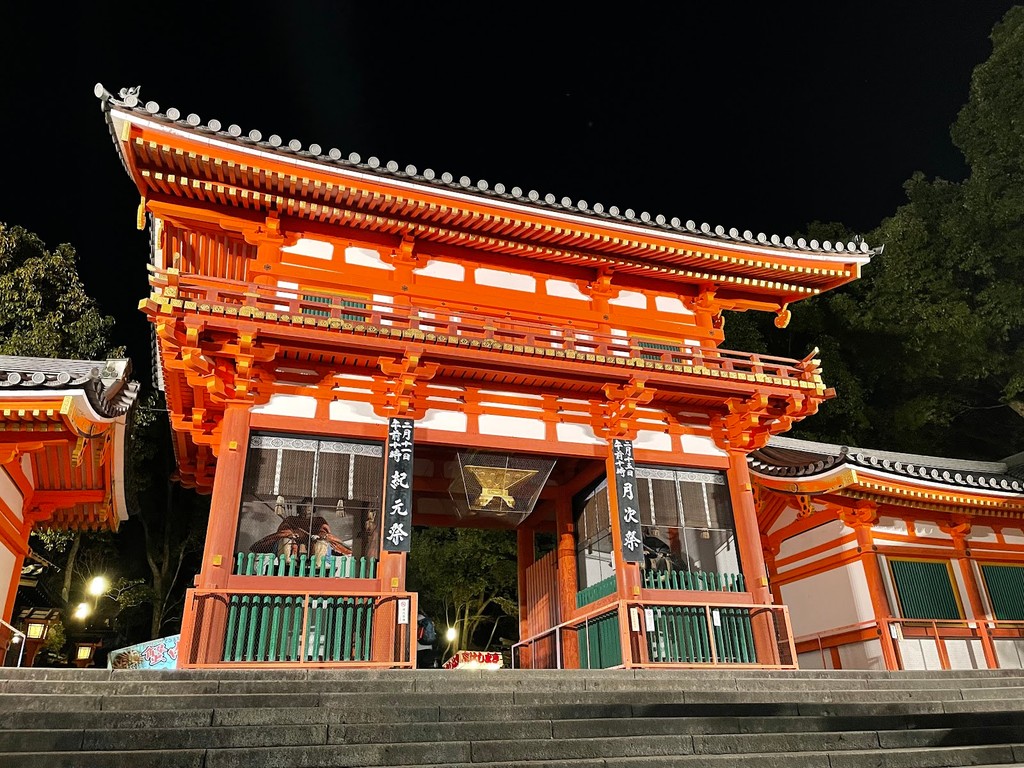
Yasaka Shrine (Source: Google Maps)
Yasaka Shrine, established over 1350 years ago, is a vibrant Shinto shrine located in the Gion District, known for its iconic red torii gate and lively festivals. The shrine is dedicated to the deity Susanoo, and its grounds feature beautiful gardens and historic buildings. Yasaka Shrine is particularly famous for the Gion Matsuri, one of Japan's most famous festivals held every July, showcasing elaborate floats and traditional performances. Visitors can explore the shrine's many halls and participate in traditional rituals, making it a significant cultural and spiritual site in Kyoto. The vibrant atmosphere and historical significance make it a must-visit.
Maruyama Park
Adjacent to Yasaka Shrine, Maruyama Park is a popular spot for cherry blossom viewing and offers a pleasant stroll through its scenic paths.
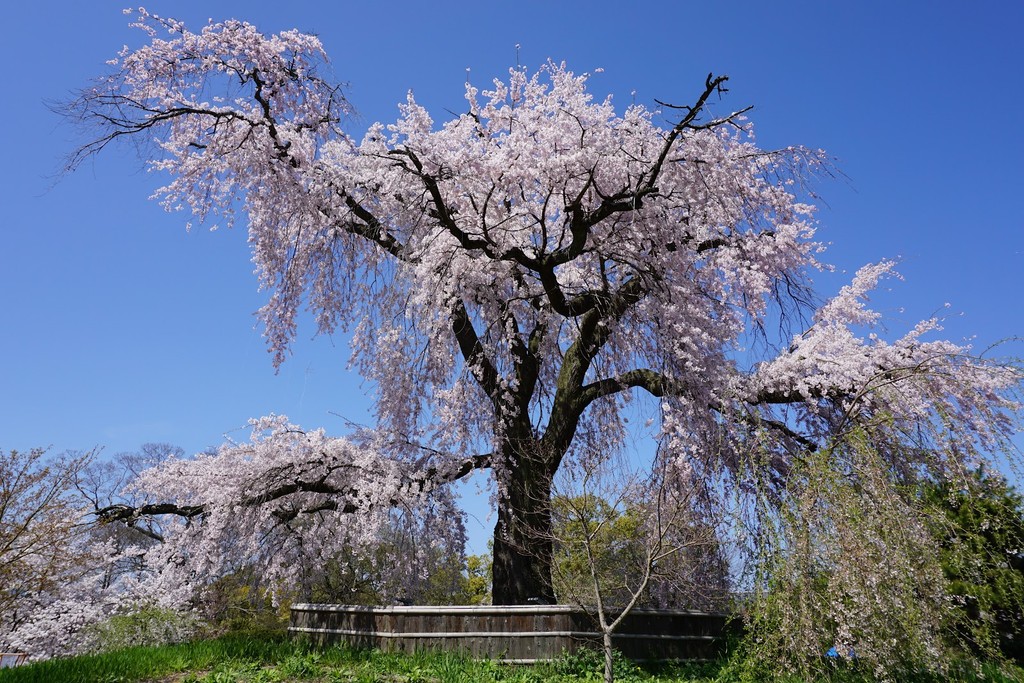
Maruyama Park (Source: Google Maps)
Maruyama Park, adjacent to Yasaka Shrine, is a beloved public park known for its stunning cherry blossom trees and serene walking paths. Established in the late 19th century, it serves as a popular gathering place for locals and tourists alike, especially during the hanami season when cherry blossoms bloom. The park features a picturesque pond, traditional teahouses, and beautifully landscaped gardens, offering a peaceful retreat from the bustling city. Visitors can enjoy picnicking under the cherry trees or exploring the park's scenic trails. Maruyama Park is a symbol of seasonal beauty, embodying Kyoto's natural charm.
Chion-in Temple
End your tour at Chion-in Temple, the head temple of the Jodo sect of Japanese Buddhism, featuring grand gates and a peaceful garden.
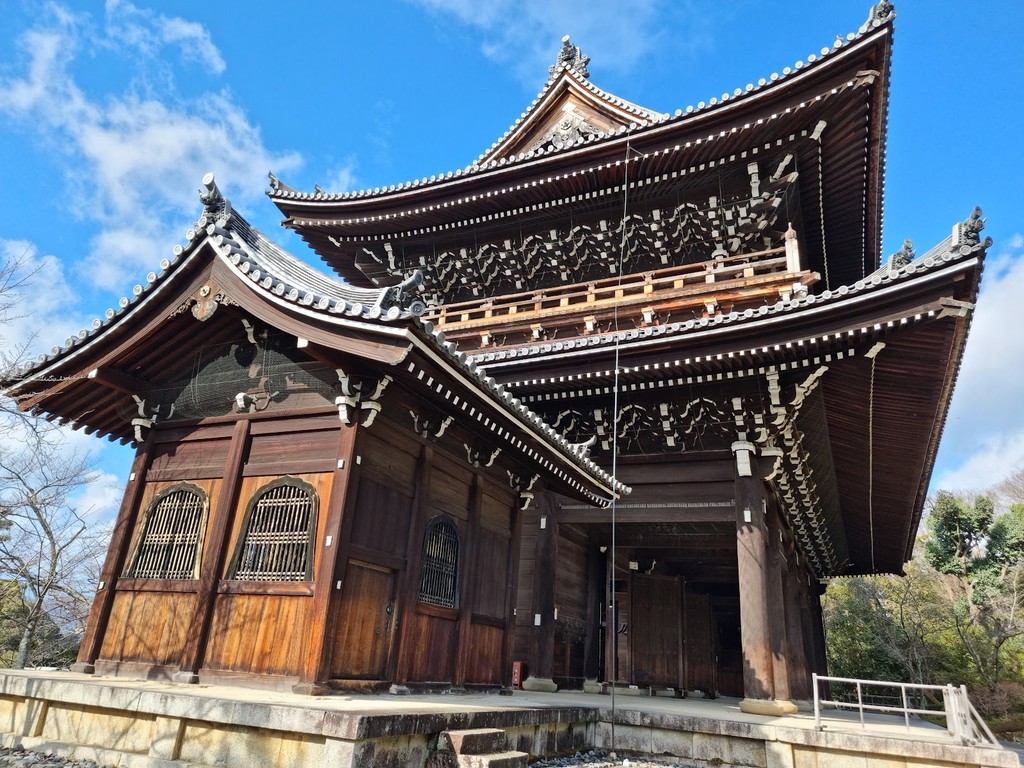
Chion-in Temple (Source: Google Maps)
Chion-in Temple, the head temple of the Jodo sect of Japanese Buddhism, is renowned for its grand architecture and tranquil gardens. Founded in 1234, it features the impressive Sanmon gate, one of the largest wooden gates in Japan, and a series of beautifully designed halls. The temple is a place of worship and a cultural heritage site, housing important artworks and Buddhist relics. Visitors can enjoy the peaceful surroundings, with meticulously maintained gardens and pathways. Chion-in also hosts various ceremonies and events throughout the year, making it a vital part of Kyoto's spiritual landscape, representing the city’s rich religious traditions.

Your travels, your rules.
Create your own Free Walking Tours.
Set your preferences, distances and anything you want to do or see.
Completely free, no payment required.